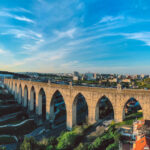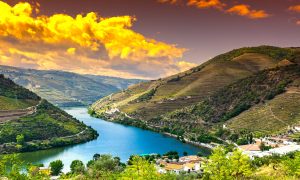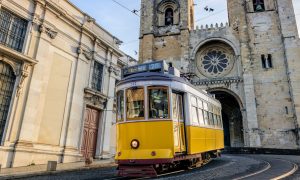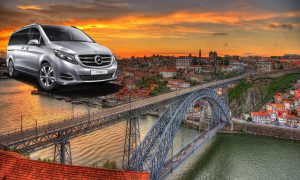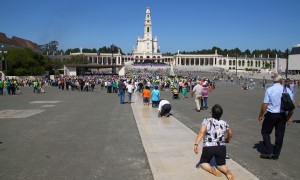In the bustling metropolis of Lisbon, a monumental structure of historical and architectural significance stands tall – the Lisbon Aqueduct. Known as the Aqueduto das Águas Livres, this remarkable feat of engineering has been a crucial part of Lisbon’s landscape since the 18th century. Spanning valleys and neighborhoods, it not only served as a vital water supply system for centuries but also stands today as a testament to Portugal’s architectural and historical richness. This article explores the story, design, and enduring legacy of the Lisbon Aqueduct.
The Historical Significance of the Aqueduct
A Response to a Water Crisis
The Lisbon Aqueduct was conceived in response to Lisbon’s growing need for clean drinking water in the 1700s. Before its construction, the city’s residents relied on wells and fountains, which were often insufficient and unsanitary.
Era of Construction and Challenges
Commissioned by King João V in 1731, the construction of the Aqueduct was a monumental task, both in terms of engineering and finance. It was constructed during a period when Portugal was flourishing from the wealth brought in from its colonies, allowing for such ambitious projects.
Architectural Mastery of the Aqueduct
Design and Structure
The Aqueduct is a masterpiece of baroque architecture and engineering. It stretches over 58 kilometers (36 miles), though its most notable section is the series of 35 arches crossing the Alcântara Valley, with the tallest arch standing at an impressive height of 65 meters (213 feet).
The Mastermind Behind the Design
The chief architect of the Aqueduct was Manuel da Maia, a visionary who combined practical engineering with aesthetic considerations. His work resulted in not only a functional aqueduct but also an iconic symbol of Lisbon.
The Aqueduct in Modern Times
Surviving the Earthquake of 1755
Remarkably, the Aqueduct withstood the devastating earthquake of 1755, which destroyed much of Lisbon. This resilience further cemented its status as an architectural marvel and a symbol of Lisbon’s endurance.
A Modern Tourist Attraction
Today, the Aqueduct is a popular tourist attraction. The Museu da Água (Water Museum) operates within its framework, offering guided tours that provide insights into its history and construction. Walking along the top of the Aqueduct offers breathtaking views of the city and the surrounding landscape.
The Aqueduct’s Impact on Lisbon’s Development
Revolutionizing Lisbon’s Water Supply
The completion of the Aqueduct significantly improved the quality of life in Lisbon by providing a steady and reliable source of clean water. It played a crucial role in the city’s public health and urban development.
An Icon of Lisbon’s Resilience
Over time, the Aqueduct has become an emblem of Lisbon’s resilience and ingenuity. It’s a reminder of the city’s ability to overcome challenges, from the 18th-century water crisis to the earthquake’s aftermath.
Exploring the Aqueduct and Beyond
The Amoreiras Reservoir
The Amoreiras Reservoir, part of the Aqueduct system, is another point of interest. It showcases the distribution and storage system that was used to manage the city’s water supply.
The Surrounding Neighborhoods
The neighborhoods around the Aqueduct, like Alcântara and Campolide, offer a mix of historical charm and modern urban life. They are worth exploring for a taste of local culture and cuisine.
Visiting the Lisbon Aqueduct
Opening Times and Prices
The Lisbon Aqueduct and the Water Museum offer different visiting hours, usually from 10:00 AM to 5:00 PM, but it’s advisable to check the official website for current times and special openings. General admission tickets are around €5, with discounts available for students, seniors, and groups. Children under a certain age may enter for free.
Discover Lisbon with Portugal Magik Tours
To fully experience the Lisbon Aqueduct and the city’s many treasures, consider a guided tour with Portugal Magik Tours. They offer personalized itineraries that include the Aqueduct, providing historical context and insights that enrich your visit.
For more information or to book a tour, visit Portugal Magik Tours, contact them at (929) 534-7500 (From USA), or email [email protected].
Conclusion
The Lisbon Aqueduct is not just an architectural wonder; it’s a bridge connecting Lisbon’s past and present. As a symbol of the city’s historical resilience and a marvel of engineering, it offers an unforgettable journey through time. With Portugal Magik Tours, you can explore this iconic structure and the vibrant city of Lisbon, where every corner tells a story.

Gonzalo
Founder/Owner of The Lisbon Guide, one of the major blog references in Portugal, established in 2014 and receiving every year 250.000 visitors from all over the world, looking to provide the best experiences in Portugal. In partnership with Portugal Magik for all private tours and transfers across Portugal, Gonzalo loves a good seafood meal at Monte Mar Cascais, and all from Michelin Chef Avillez. Favorite Hotel in Lisbon/Portugal, Penha Longa Resort by Ritz Carlton.
For over 15 years, Gonzalo have been helping thousands of travelers yearly to plan a perfect trip to Portugal. Based in Lisbon/Cascais and working in this field for over 20 years, with multiple ongoing projects. Also an avid TripAdvisor user level 6 with more than 300.000 readers worldwide.
Many years working also as a Private Guide of Lisbon, Sintra, Fatima, Porto, Douro Valley, Evora, and other locations in Portugal.





